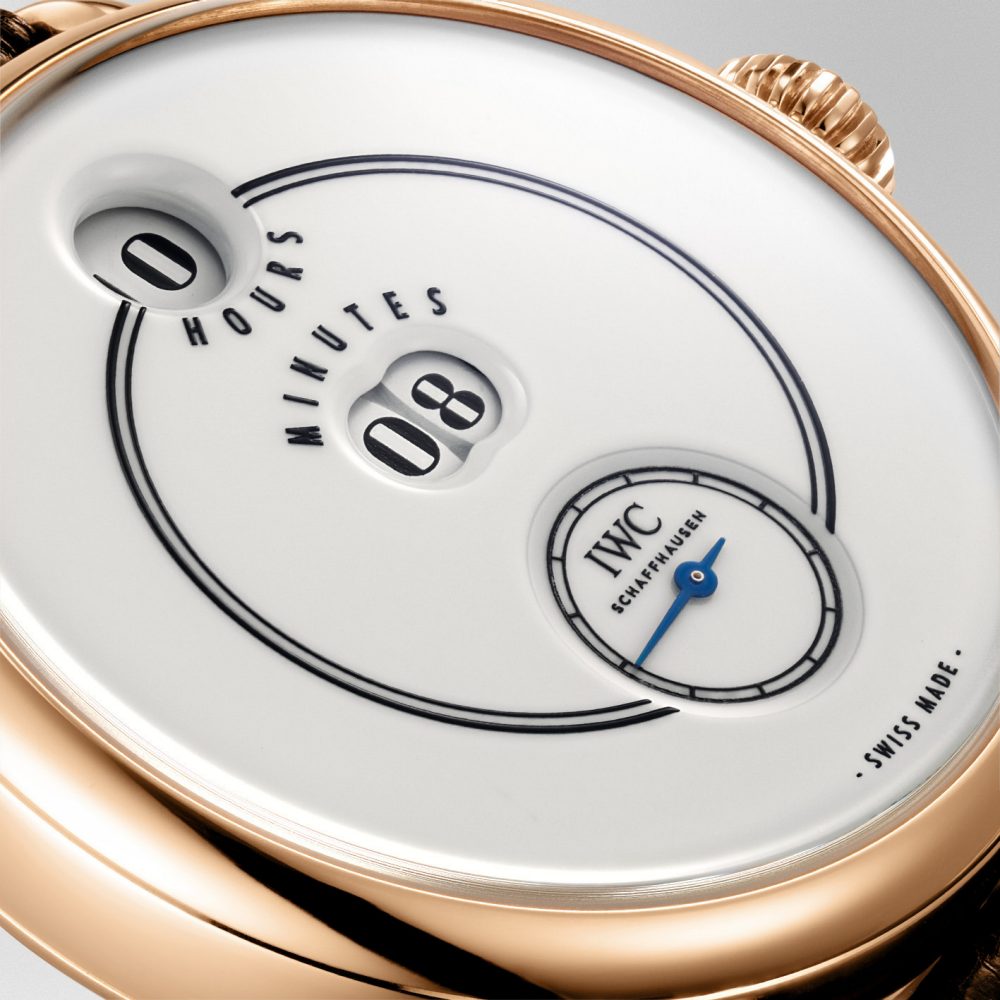What happens when instead of looking to the 1960s for inspiration on your new heritage watch, you look back to the 1880s? What you get is the IWC Tribute to Pallweber Edition 150 Years.
Pocket watches are never going to make a comeback. It’s sad but true, as they are too cumbersome and impractical for even the most die-hard horological enthusiast. Yet despite their limited use today, they are invaluable sources of inspiration as many unique mechanisms and displays were first seen in pocket watches. One such display method is digital hours and minutes. Yes, without so much as a battery or LED, it can be digital as in the traditional sense, a digital display is one which shows the time with digits, rather than hours or a pointer. It was Austrian watchmaker Josef Pallweber who first patented a digital pocket watch in 1883 and he soon licensed the design to IWC. The IWC Pallweber pocket watches were only produced from 1885 to 1887 and their limited run have made them one of the most desirable IWC pocket watches ever made.
At SIHH 2018, IWC released two more versions of the Tribute to Pallweber wristwatch to accompany the rose gold version announced at the end of 2017. Two versions of the wristwatch will be available, a platinum version in a limited run of 25 pieces and a stainless steel version in a limited run of 500 pieces. The stainless steel version has a beautiful blue lacquered dial with brilliant white discs displaying the hours and minutes and a rhodium plated running seconds dial at 6 o’clock. At 45mm, the case is on the large size for a dress watch, but IWC says this is in keeping with the size of the original pocket watch.
The real star of the Tribute to Pallweber wristwatches is the Caliber 94200, an in-house manual wind movement. It’s a beautifully engraved movement with thin Geneva stripes and an additional ‘150 years’ medallion to celebrate the anniversary of IWC. To accommodate the excessive power usage of the digital display, an extra mainsprings and gear trains are required. The first mainspring and gear train power the escapement and timekeeping whilst the second powers the single minute disc. Every sixty seconds, a release mechanism momentarily unlocks and locks the gear train that triggers the single minute disc. Then every ten minutes, the single minute disc will trigger the ten-minute disc (1X, 2X, 3X, etc) to change and every sixty minutes the hour disc will also change.
As a practical watch, the Tribute to Pallweber 150 Years doesn’t cut it. But as a work of classic watchmaking and as a tribute to one of the most unique watches made by the brand, it’s marvellous. iwc.com





